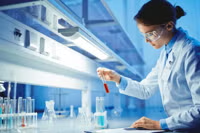WASHINGTON, DC (November 15, 2022) — The American Chemistry Council (ACC) is excited to announce important developments that demonstrate progress toward meeting America’s plastic makers’ goal to reuse, recycle or recover 100% of U.S. plastic packaging by 2040:
- McKinsey & Company has published, “Beyond the bottle: Solutions for recycling challenging plastics,” which found demand for recycled plastic is strong, and wider deployment of feedstock preparation facilities (i.e., secondary sortation facilities) can help recycle more types of plastics beyond bottles, aggregate plastics to produce needed volumes, and improve the quality of the feedstock available for recycling. When scaled, these facilities can drive down the cost of plastics processing, making them economically attractive to many investors.
- America’s plastic makers are already making investments in the types of facilities that McKinsey highlights as critical for improving recycling rates and accelerating a more circular economy for plastics. This includes last month’s $100 million investment announced by ExxonMobil, LyondellBasell, and Cyclyx in Houston.
- And a new report (fact sheet) that examined the potential for using advanced sortation in the Northeast found these facilities could recapture 50% of the plastic and other material that otherwise would have gone to landfill, so it could be recycled.
“When it comes to building a circular economy, America’s plastic makers aren’t just dipping their toes in, we’re diving in headfirst,” said Joshua Baca, vice president of plastics at ACC. “We’re seeing millions, sometimes hundreds of millions of dollars, being regularly announced to expand, advance and accelerate America’s plastics recycling infrastructure.”
As the McKinsey article notes, wider access to feedstock preparation facilities, would enable a huge step forward for plastics recycling – and the economics of these facilities are now increasingly attractive to many investors.
Plastic makers will continue to collaborate with businesses and policymakers to usher in a new era of reuse and recycling and accelerate the transition from a linear to a circular economy.



